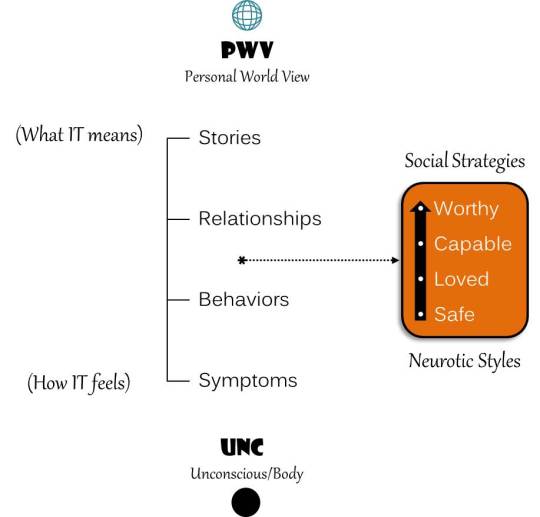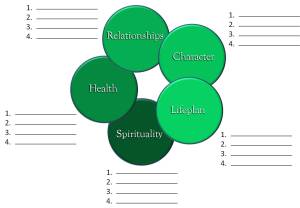Managing Your 3 Resource Systems – HEALTH
 NOTE: The prologue of this post (in orange text) is the same in all three posts under the general title “Managing Your 3 Resource Systems.” Topic-specific content is below that.
NOTE: The prologue of this post (in orange text) is the same in all three posts under the general title “Managing Your 3 Resource Systems.” Topic-specific content is below that.
A lot of people are looking for the magic key that will open a door to the meaning and joy of life. Unhappy people are convinced they will find this key one day, which is why happiness eludes them. It’s not actually something you can find, and there is no magic key or secret door. Looking for happiness assumes that you do not presently know where it is, when in fact it’s not anywhere at all.
Happiness arises as you learn how to master the three resource systems of your life: Time, Money, and Health. Again, you won’t find happiness some day in the future, and neither can it be purchased or achieved. When we talk about mastering these three resource systems, don’t make the mistake of thinking that this, finally! is your magic key.
Happiness is a measure of the flow, quality, and connection of your life to what really matters. It’s not that getting rich will make you happy, but it is true that happy people are better at mastering the flow of wealth in their lives. It’s not that being in perfect health will make you happy, but it is true that happy people are better at mastering the quality of health known as vigor, which enables them to enjoy more of what life has to offer.
And it’s not that you need more time to get happy – and believing so is a sure-fire setup for disappointment, but it is true that happy people are better at mastering the connections over time to what supports the life they really want.
After we take a look at the separate elements in the mastery of each of the three resource systems of Time, Money, and Health we will step up a level to talk about the meta-skill of managing your life across all three. Mentallurgy LifeChange teaches that Time, Money, and Health are really just different transformations of the energy known as consciousness. By managing your balance across the three systems, you will be cultivating the conditions that allow happiness to arise.
Health
Like the other resource systems, Health is something many of us take for granted – as long as it’s allowing us to do what we want. When we run out of time or money, or when the quality of our health is compromised somehow, that’s when we pay attention. Unhappy people commonly suffer from health challenges, which only supplies them with something else to complain about.
Mentallurgy LifeChange makes a critical distinction between health and fitness, even though these are used interchangeably in popular culture. But the difference is significant! Fitness is a function of how “fit” you are physically with respect to a specific challenge level of strength, agility, flexibility, speed or stamina. You can be in great health but not fit to run a 5K race. It will take conditioning, practice, and time to rise to that challenge.
Health, on the other hand, is less about challenge levels than your chronic physical and mental well-being. Your body, its organ systems and the cells supporting your life are working efficiently and productively. The energy your body needs to restore itself, build immunity, eliminate toxins, and engage your daily tasks with vigor (what we might think of as the measure of health) is being managed well.
The resource system of Health also has a set of four actions to keep in balance. Optimizing health means that you give each one the attention it needs, and that you maintain a regimen that will support a healthy life.
Diet
Unhappy (and unhealthy) people are typically not very mindful or disciplined when it comes to what they put into their bodies. Their diet is filled with junk food, processed sugar and flour, saturated fats, artificial sweeteners, high sodium, and regular doses of caffeine or energy drinks to get them through the inevitable energy slumps.
Your diet, referring to the nutritional value of what you eat and drink, is what delivers to your cells the energy they require. If you take in junk, toxins, and artificial food substitutes, your cells succumb to oxidation and inflammation, which can lead to them becoming abnormal and reproducing uncontrollably as cancer. Inflamed cells also mean a fat body, as it tries to remove and lock away the xenobiotics (strange or ‘alien’ substances) that would otherwise cause damage and additional health complications.
People who struggle with obesity – the drain of health and longevity – aren’t always (or only) guilty of excessive calories. Their fat is also the body’s (ultimately futile) strategy for stashing toxins into quarantine.
Instead of “going on a diet,” it is much better to take in a well-balanced variety of foods that are fresh (not packaged), whole (not processed), and organic (not genetically modified, boosted with fertilizers, or treated with herbicides and hormones).
Exercise
We’ve already made a distinction between (core) health and (adaptive) fitness, but something also needs to be said for regular movement and aerobic activity. As a rule, unhappy people don’t get off the sofa unless they have to, and only rarely do they go outside for a brisk walk or run. Exercise doesn’t have to take hours out of your day, and it isn’t even necessary to engage in it as a ‘special project’ apart from your daily life.
In addition to keeping your muscles toned and bones strong, regular activity will flush toxins, charge your immune system, keep your arteries and heart flexible and strong, and invigorate your brain so it can function optimally as well.
Rest
Unhappy (and unhealthy) people crowd both ends of the bell curve when it comes to getting sufficient rest. They either don’t sleep well because of obesity-related issues (e.g., sleep apnea and midnight cravings), or they sleep too much (but not well) because they lack the energy and motivation to get “up and at it.”
As a rule you need 7-9 hours of restful sleep each night, preferably between the hours of 9PM and 6AM. Humans evolved as a daytime-active, nighttime-dormant species, which is why your body and brain benefit most from restful sleep in that time zone.
Meditation
Although this word can mean many things, in Mentallurgy LifeChange it refers to any practice that serves to focus the mind, calm the body, and center the self. A lot of people (not only, but unhappy people especially) have difficulty with this because once the body starts to calm down, it’s hard to keep it from sliding further into sleep. They “gave it a try” but it “didn’t work” for them.
Cultivating a state of focused calm, where you are simultaneously relaxed and alert, takes time and consistent practice. But once you have achieved it, the benefits are both numerous and significant! Everything functions better and you feel more present to your life. This one action, consistently practiced, will elevate the quality of your life in remarkable ways. For a simple breathing meditation, click here.





